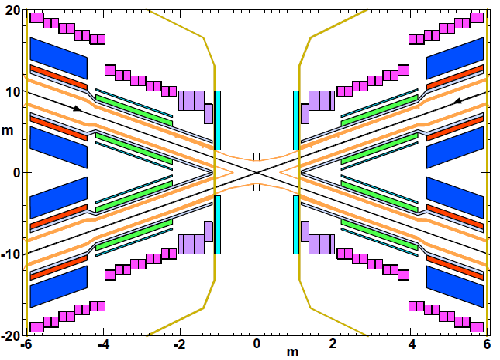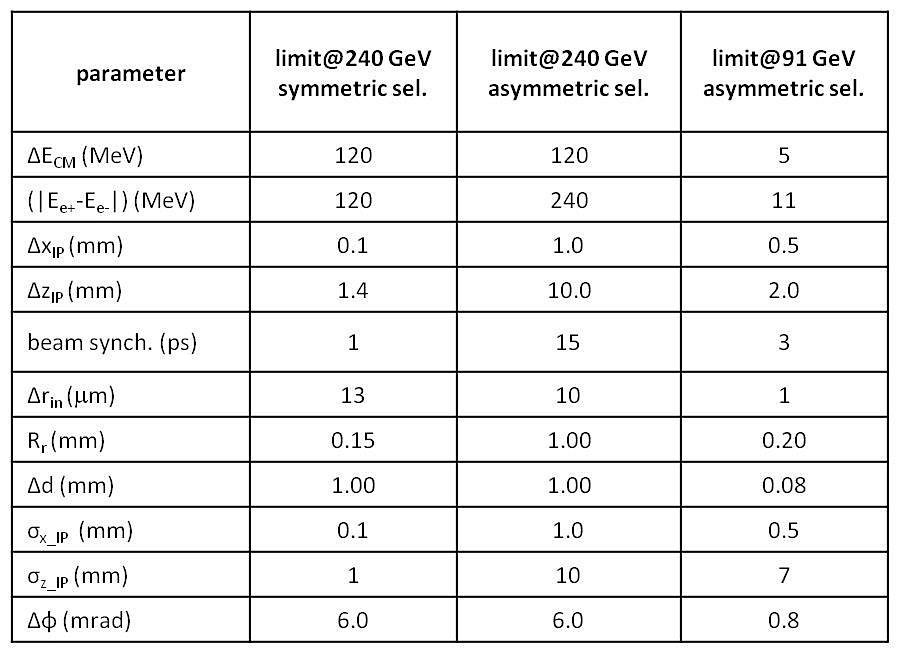

Luminosity is the number of collisions that can be produced in a detector per square cm and per second. Although it can be determined from a QED Bhabha scattering by simple counting, control of the integrated luminosity relative uncertainty at the level of ten to the minus four power posses serious challenges for instrumentation of the very forward region of a detector at future electron-positron colliders. Based on our previous work on integrated luminosity measurement at ILC, the group is currently focused on systematic uncertainties in luminosity measurement at CEPC as a part of the MDI effort for CEPC TDR.
"A man should look for what is, and not for what he thinks should be."
- Albert Einstein -

The MDI related effects:
uncertainty of the effective center-of-mass energy (∆ECM) for the x-section calculation
uncertainty of the asymmetry in energy of the e+ and e- beams, (|Ee+ - Ee-|)
IP position displacements with respect to the luminometer, radial and axial (∆xIP, ∆zIP), caused by the finite beam transverse sizes and beam synchronization, respectively.
Read more >>

Detector-related uncertainties:
uncertainty of the luminometer inner radius (∆rin)
spread of the measured radial shower position w.r.t. to the true impact position on the luminometer front plane (σr)
uncertainty of the longitudinal distance between left and right halves of the luminometer (∆d)
mechanical fluctuations of the luminometer position with respect to the IP caused by vibrations and thermal stress, radial and axial (σxIP, σzIP)
twist of the calorimeters corresponding to different rotations of the left and right detector axis with respect to the outgoing beam (∆φ)
Read more >>

CEPC IR layout:
the machine-detector interface (MDI) of CEPC double ring scheme is about ± 7 m in length form the IP, as can be seen in figure, including many elements that need to be installed: luminosity calorimeter (cyan), anti-solenoid (violet), compensating solenoid (magenta), QD0 coil (green), copmensating coil (azure), iron shield (blue), QF1 coil (red), helium chamber (cyan-blue), warm beam pipe (orange). This figure represents cryostat in detail without detector solenoid.
we have contributed to MDI design studies sumarized in the Chapter 9 of the CEPC-CDR
Read more >>
Main systematic effects are coming from the uncertainty of the luminometer inner radius and uncertainty of the effective center-of-mass energy, as shown in the table, contribution to the CEPC CDR.

Effective center-of-mass energy can be determined within the beam-spread from experimentally measurable quantities, from the acolinearity of muons from e+e-→μ+μ- measured in the central tracker, as proposed for FCC-ee*.
We’ve shown that with the nominal polar angle resolution of the central tracker @ CEPC (0.1 mrad), effective center-of-mass energy can be determined with 2.5% of the beam-spread (< 1 MeV) relative accuracy, at Z0 pole, after 3 minutes of data taking. The above meets precision requirements of 3·10-4, 500 keV and 100 keV for the relative precision on Z0 cross-section, total width and mass, respectively.
Less than a minute of running at the Z0 pole is required to meet the relative precision of integrated luminosity of 10-4. At 240 GeV, about 16 hours of running is required to meet the relative precision of integrated luminosity of 10-3.
